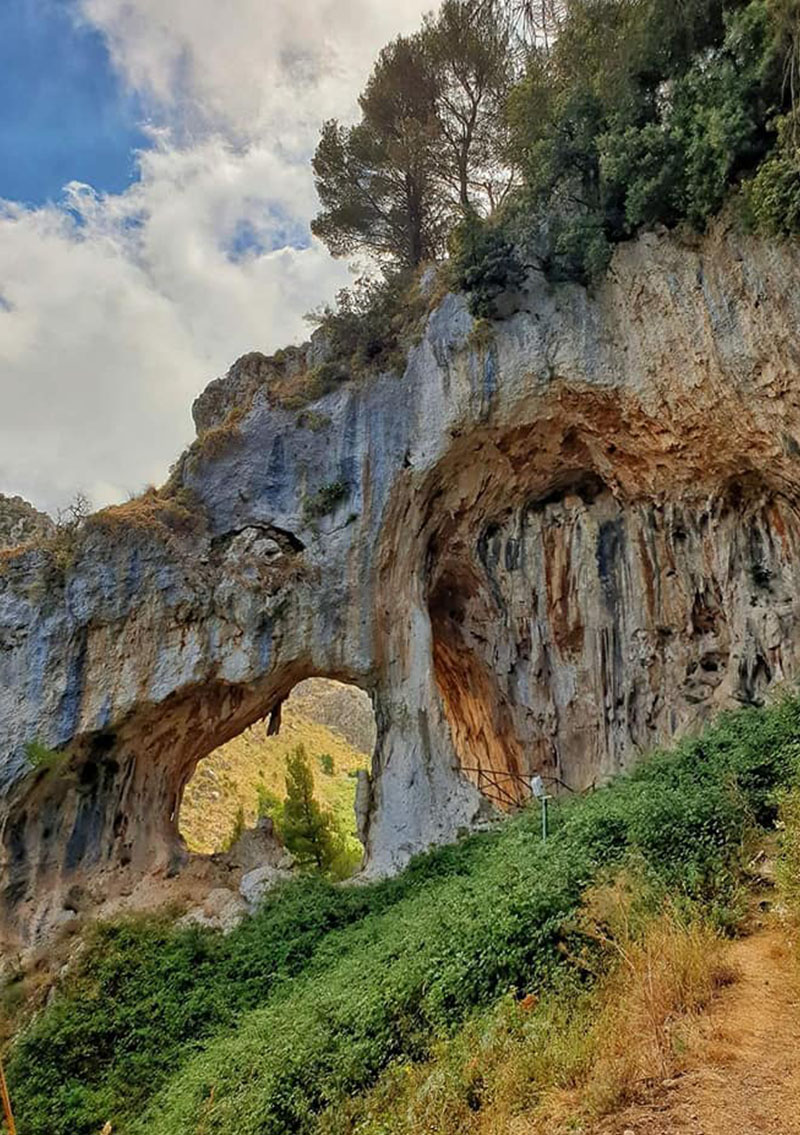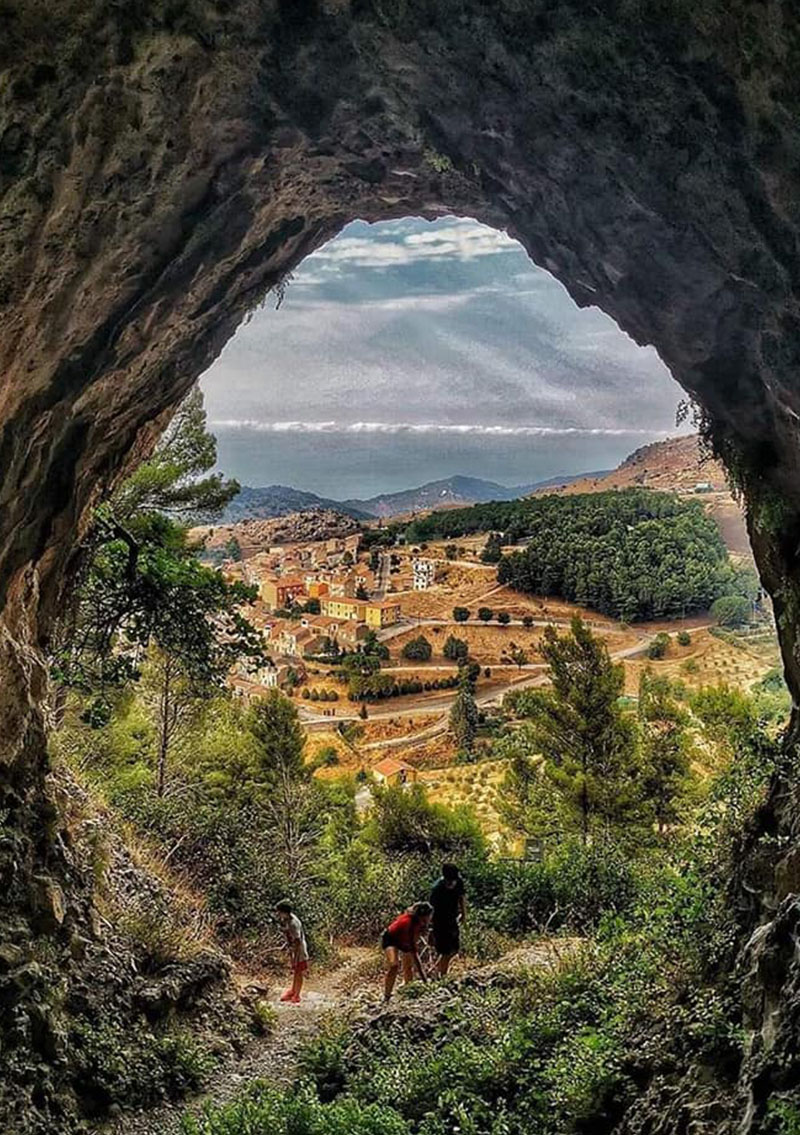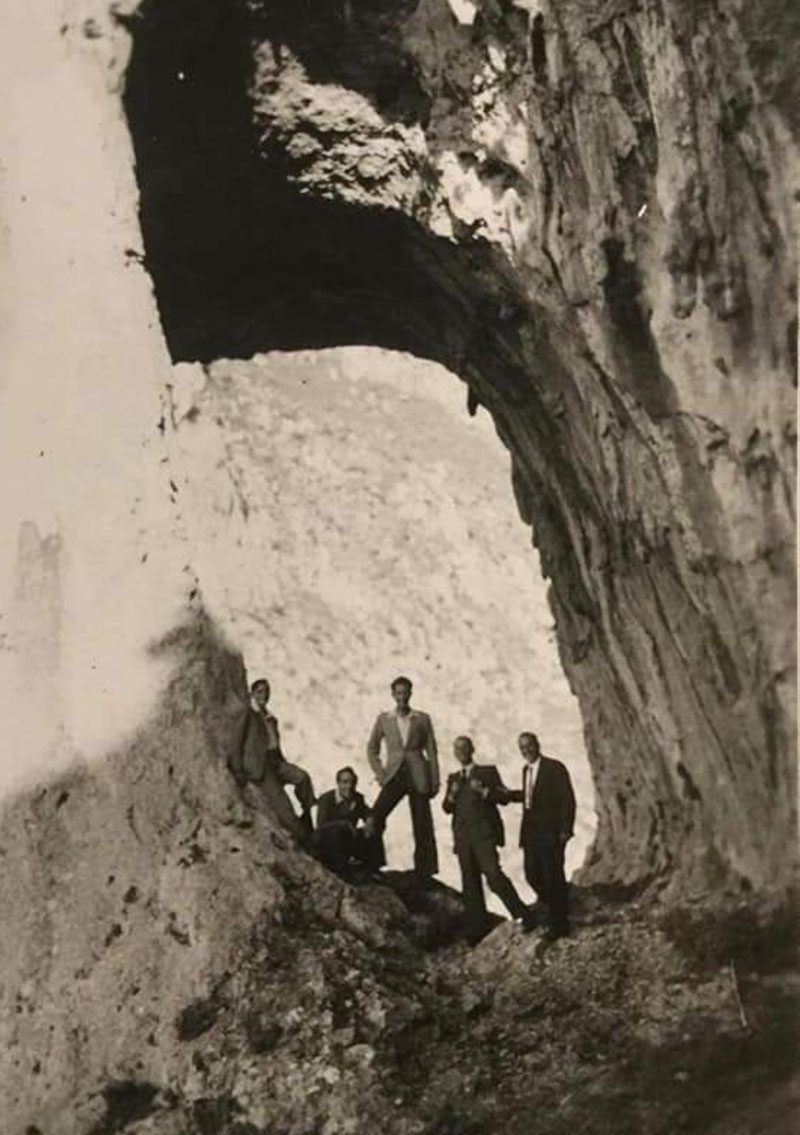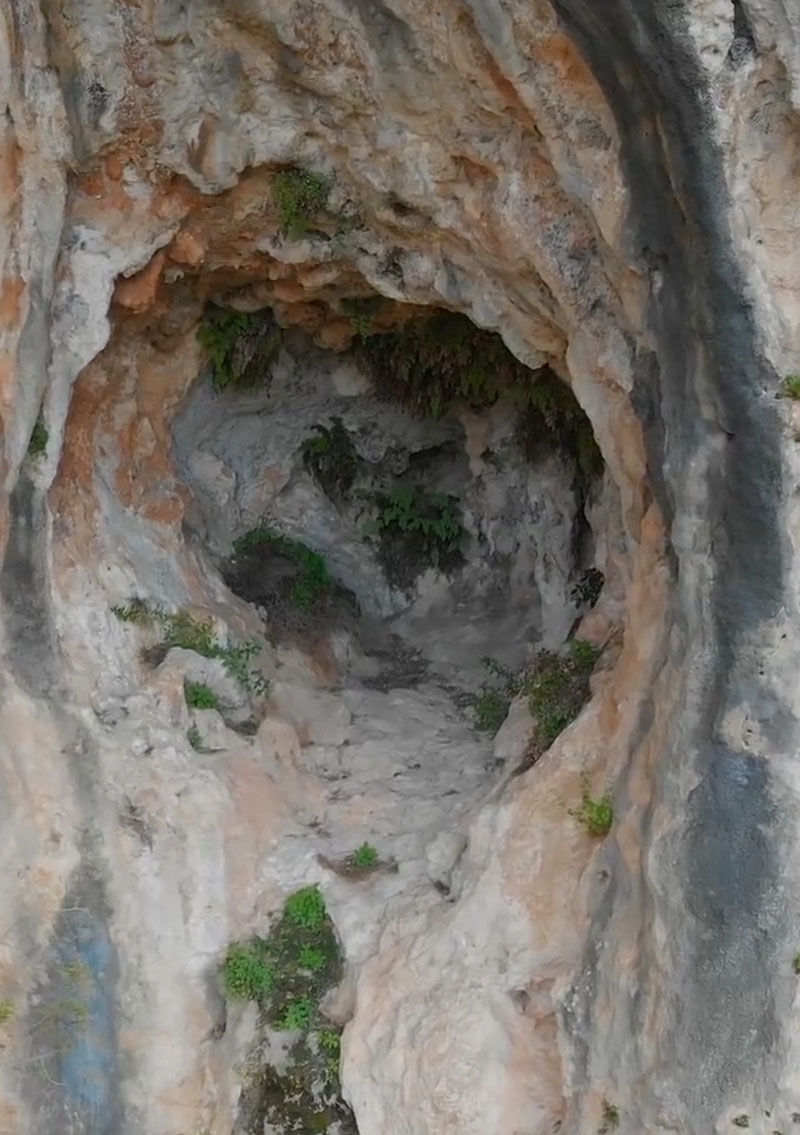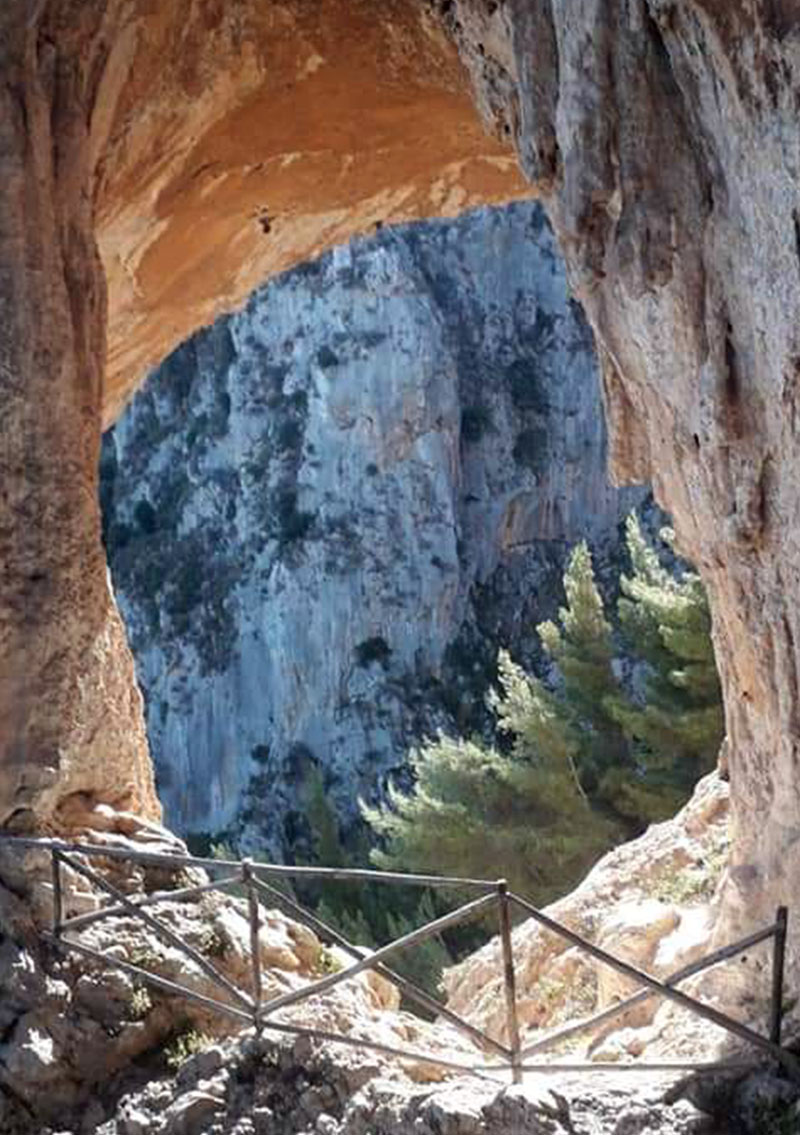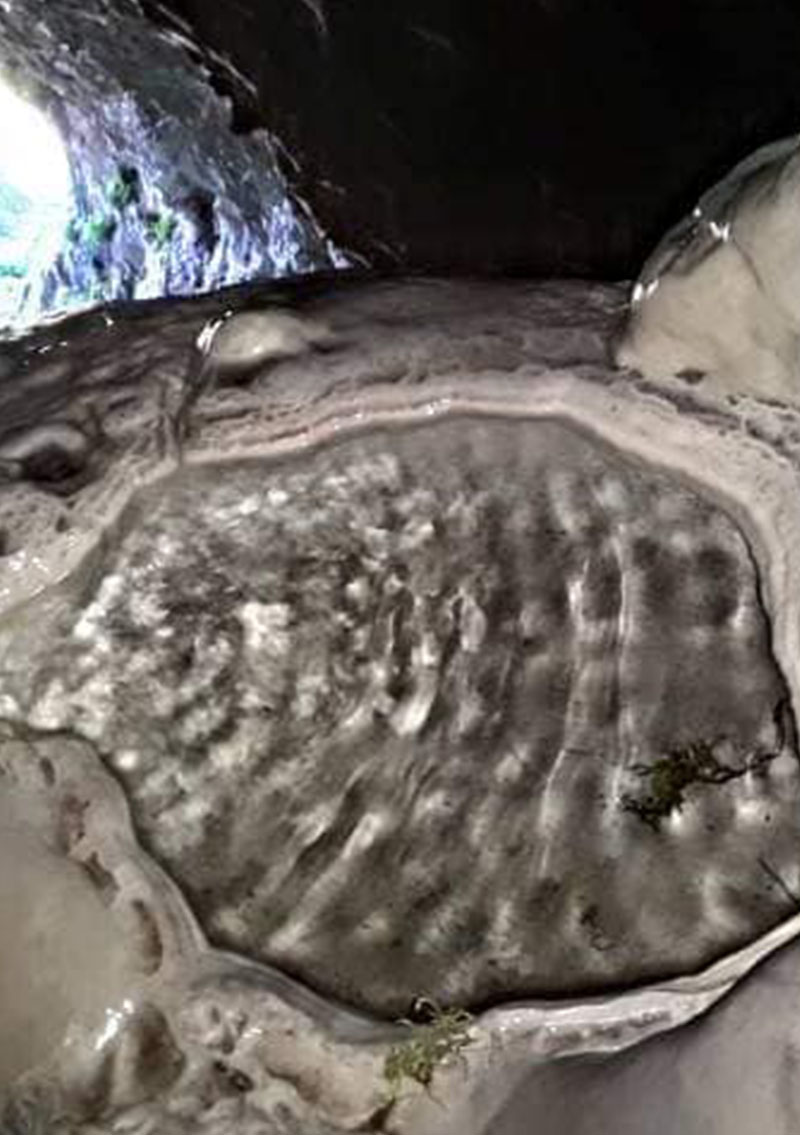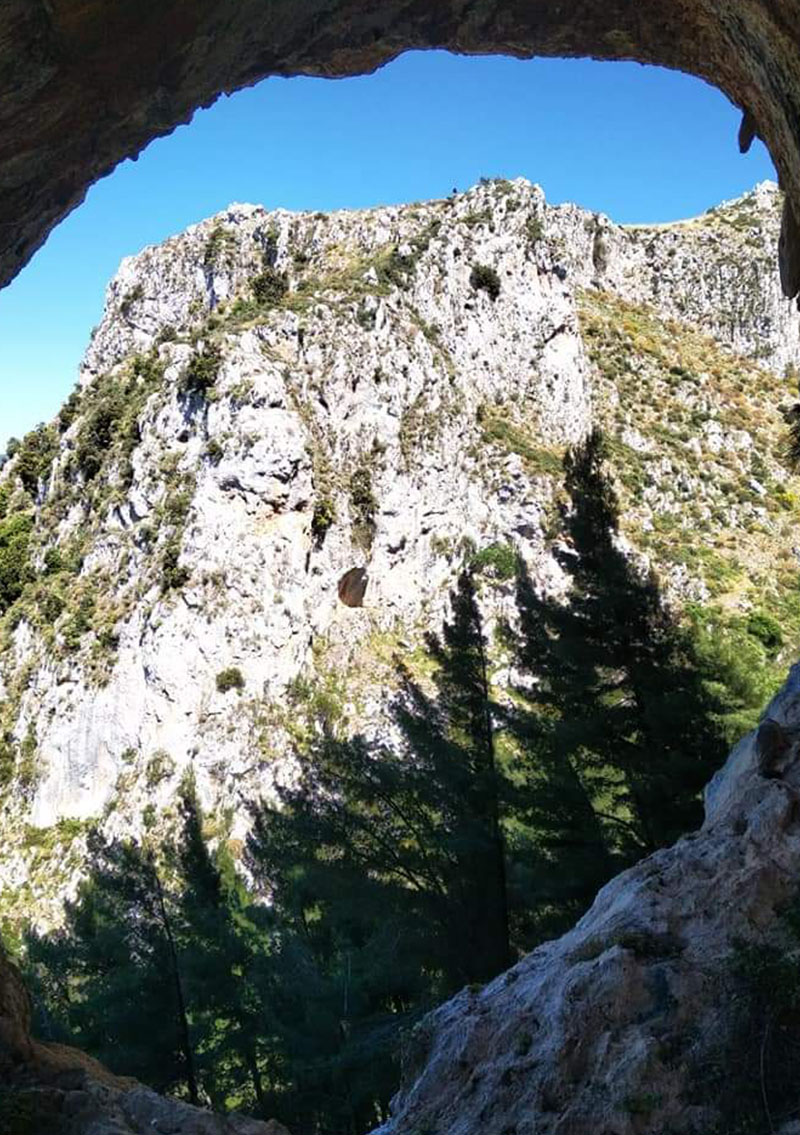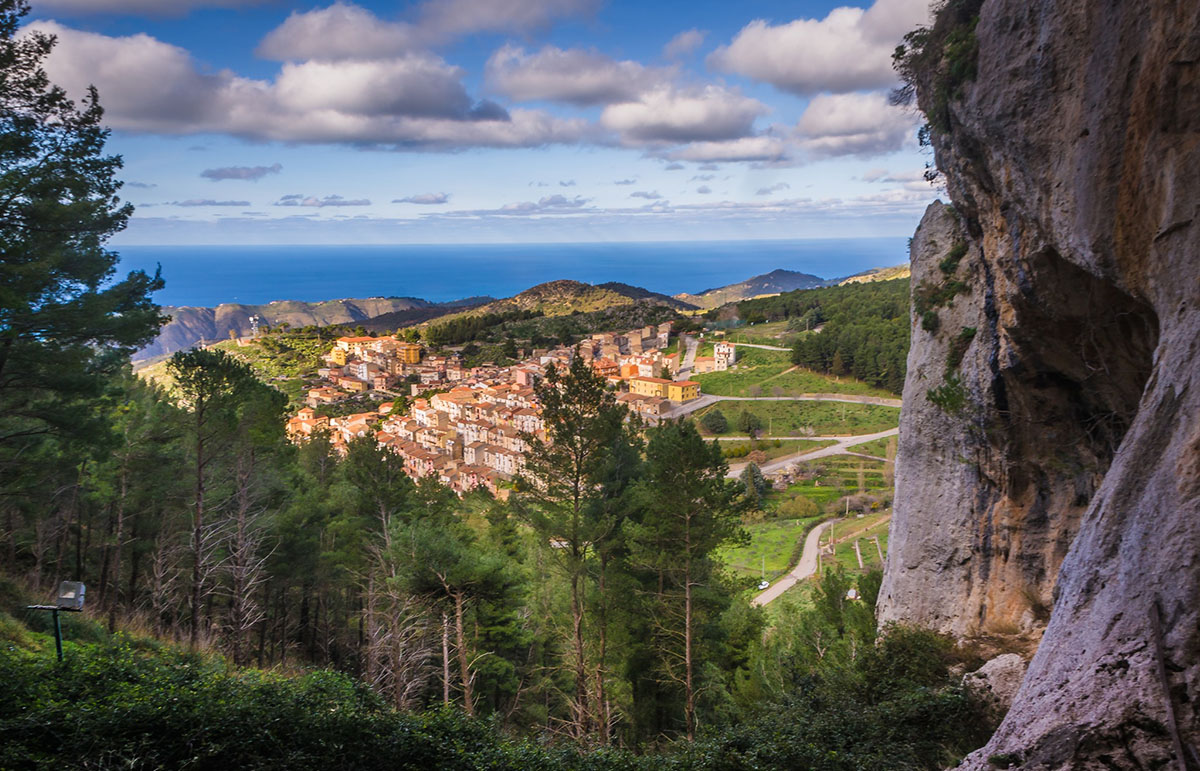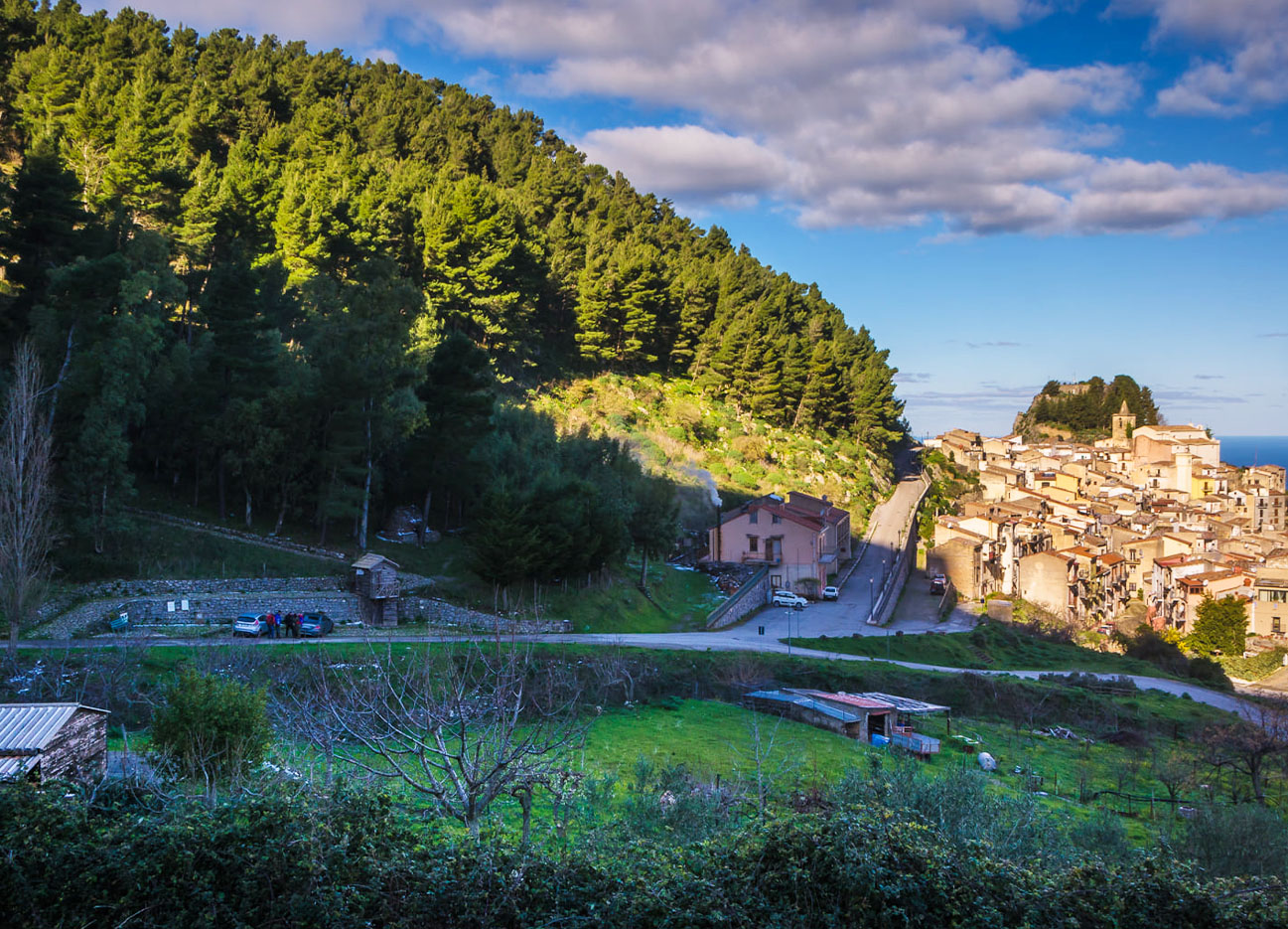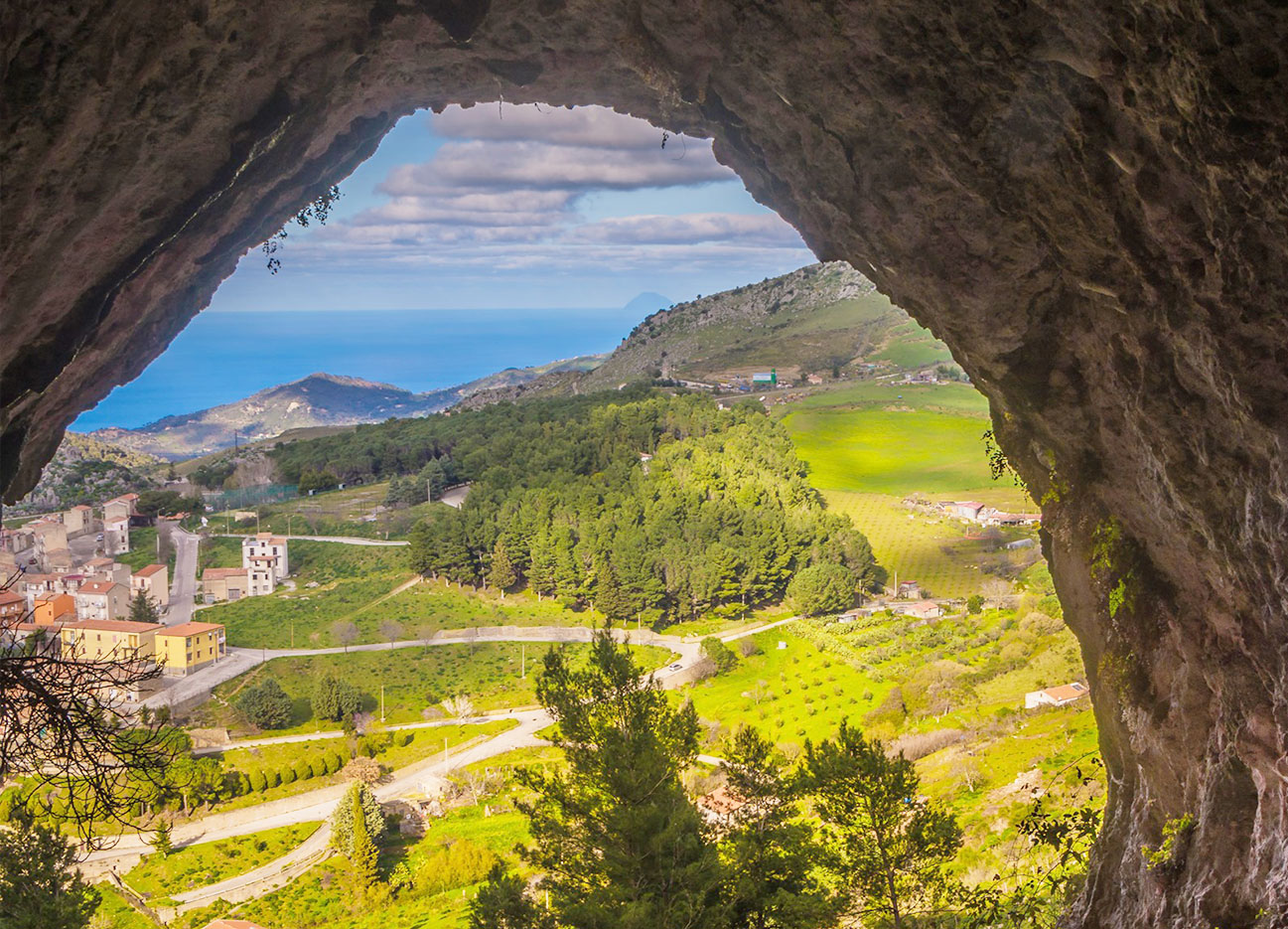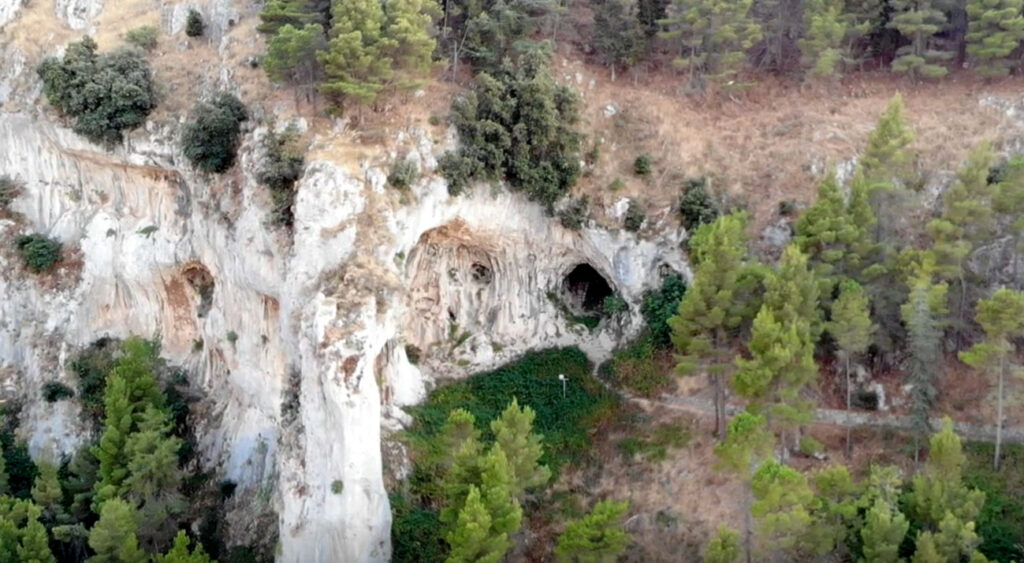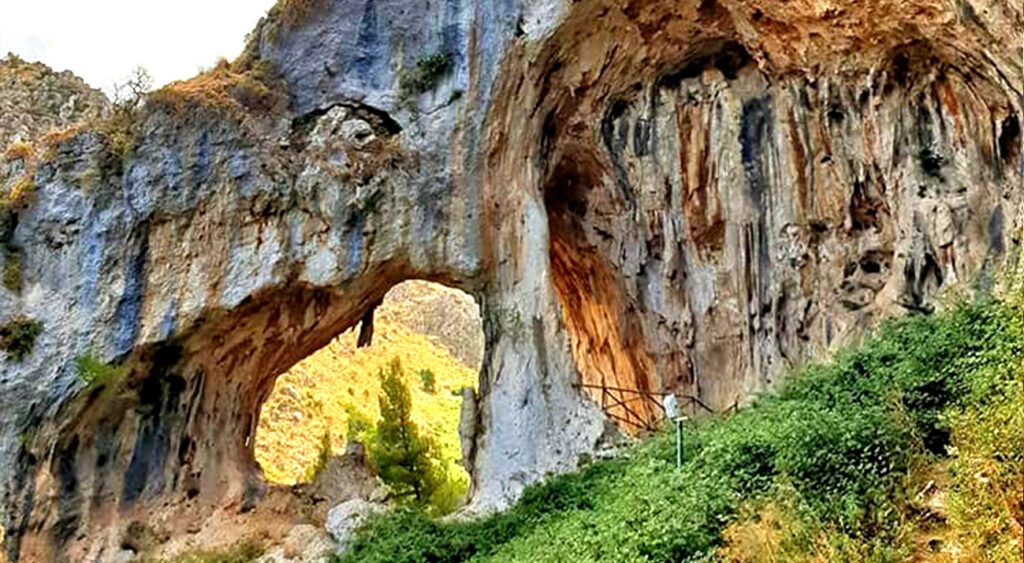Passafiume in this regard writes “…that there is a crater of stone set in the center of the cave, shaped with wonderful natural art; this rock contains on the inside a sixteen feet high and ten wide basin, whose top is empty like a crater made by the constant dripping of water”.
The access to the spring consists of a small natural staircase built by man’s feet over thousands of years. In the sinuosity of its external cornices, which are inaccessible, where the “quercus ilex” (a holly oak) and the wild pistachio grow up spontaneously, thousands of swallows nest, which, with their lively cry, make the break of who visits the other one in spring more delightful.
During the winter, the sheep that graze in those surroundings, often find shelter there, especially when the north wind blows, while in summer it offers drinks to the flocks of pigeons that nest there.
You can get there from the plateau of St.Nicholas along a winding but predictable path which unfolds in the middle of a lush pine forest, up to the small massif called “Iazzu di vuoi” (oxen’s’ bedding) and from there through a small flat section to the cave.
The Grattara cave is an essential part of history and folklore, because in the legend it is the house of the Befana (“a vecchia strina“), the protagonist of an ancient fairy tale, which tells that the Befana had her own receptacle in this cave and that on the last night of the year, evanescent and invisible, she came down from the chimneys into the houses of the people from Gratteri to fill her stockings with gifts.



